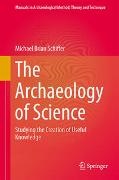Read more
This manual pulls together-and illustrates with interesting case studies-the variety of specialized and generalized archaeological research strategies that yield new insights into science. Throughout the book there are templates, consisting of questions, to help readers visualize and design their own projects. The manual seeks to be as general as possible, applicable to any society, and so science is defined as the creation of useful knowledge-the kinds of knowledge that enable people to make predictions. The chapters in Part I discuss the scope of the archaeology of science and furnish a conceptual foundation for the remainder of the book. Next, Part II presents several specialized, but widely practiced, research strategies that contribute to the archaeology of science. In order to thoroughly ground the manual in real-life applications, Part III presents lengthy case studies that feature the use of historical and archaeological evidence in the study of scientific activities.
List of contents
PART I.- 1 Introduction.-2 Science: A Behavioral Perspective.- 3 The Varieties of Scientific Knowledge.-PART II.- 4 Experimental Archaeology.- 5 Ethnoarchaeology.- 6 Archaeometry.- PART III .- 7 The Artifacts of Modern and Early Modern Science.- 8 Thomas Edison's Science.- 9 Colonization and Exploration.- 10 Scientific Expeditions to Antarctica.-11 The U.S. Nuclear Establishment.-12 Archaeology of the Space Age.- 13 Discovery Processes.
Report
"A Renaissance man in the best sense of the phrase, the author long ago ventured forth with such archaeological expertise into inter-disciplinary waters...this book attempts to systematize and stake out an archaeological approach to science studies by characterizing scientific activity in behavioral terms" (Tim Webmoor, Archaeolog Blog, 2014)

